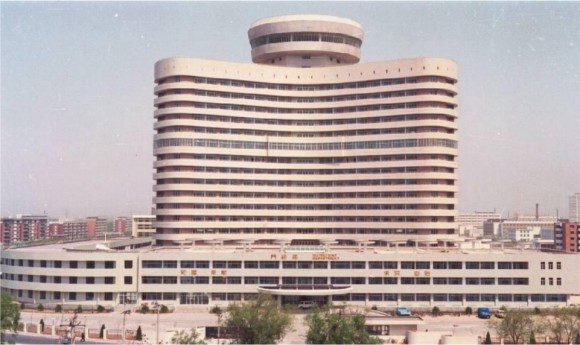China has developed a reputation as an authoritarian state that systematically disregards human rights. Adding to the list of potential human rights violations, a recent undercover investigation into one of China’s foremost hospitals questions the source of organs used to perform over 1,600 liver transplants.
Epoch Times, an international news organization in New York that focuses on human rights issues in China, conducted an exclusive report over Tianjin First Central Hospital’s well-known organ transplant practice. Based on the investigation, the researchers suspect that potentially tens of thousands of people may have been murdered so the hospital could harvest the organs and make a profit.
Where did the organs come from?
The report found that the organs could not have come from volunteer donors, since China just recently started its organ donation system. Consequently, the report concluded that the organs could only have come from executed prisoners.
“In Tianjin, that would be about 40 executions a year—a number derived from calculating the city’s population against the national death row total,” reads the report. “But at Tianjin First Central, the number of transplants is off the charts.”
Between the late 1990s and 2003, Dr. Shen Zhongyang, who is regarded as one of China’s most prominent surgeons, performed around 1,000 liver transplants at the hospital, according to a report published by the Tianjin municipal government. The report reads:
Official numbers from the hospital are scarce, but penetrating that secrecy makes clear that Tianjin First Central Hospital, one of the busiest and most acclaimed in the country, for years having enjoyed extensive official backing, transplanted many times more organs than a supply of executed prisoners could support. Moreover, it appears to have transplanted many times more organs than it says it did.
In a detailed study of its activities based on publicly available documents, Epoch Times found sufficient evidence to throw into great doubt, if not demolish entirely, the official narrative of organ sourcing in China. This is simply due to the number of transplants: they are far too high
This issue has largely been dodged by luminaries in the international medical community. But the circumstantial evidence bolstering the alternative explanation—organized mass murder of prisoners of conscience, using the tools of medicine, in the service of profit, by the world’s most populous nation—continues to grow, and with it frustration among doctors that nothing is being done.
Meanwhile, the number of transplants continued to rise. There were approximately 209 liver transplants in January 2002. By the end of 2003, that number grew to 1,000 transplants, according to a report in Enorth Netnews. No information was available about why these graphs stopped in 2003.
The report found that the organs may have come from Falun Gong prisoners in China. According to the 2014 book, “The Slaughter,” by Ethan Gutmann, China is killing members if religious affiliations, perhaps harvesting and selling their organs to make a profit.
Another disturbing feature of the investigation is that it discovered Dr. Shen’s methods “consisted with live or close-to-live harvesting from donors.”
Chinese government invests in organ transplant program
The Chinese government invested large sums of money into organ transplantation. In December 2003, a local government body spent approximately $20 million to build a 17-story organ transplant building for the Tianjin hospital in wake of its rapidly budding organ transplant program, according to the report.
In addition, back in 2014, The Transplantation Society, a non-government organization (NGO) of the World Health Organization, issued a letter condemning China for using organs from executed prisoners, deeming the practice “unacceptable,” notes the report.
The investigations underscores China’s total discard of human rights, treating people as objects that can be slaughtered and sold for profit instead of as persons with intrinsic moral value.
Sources include:


